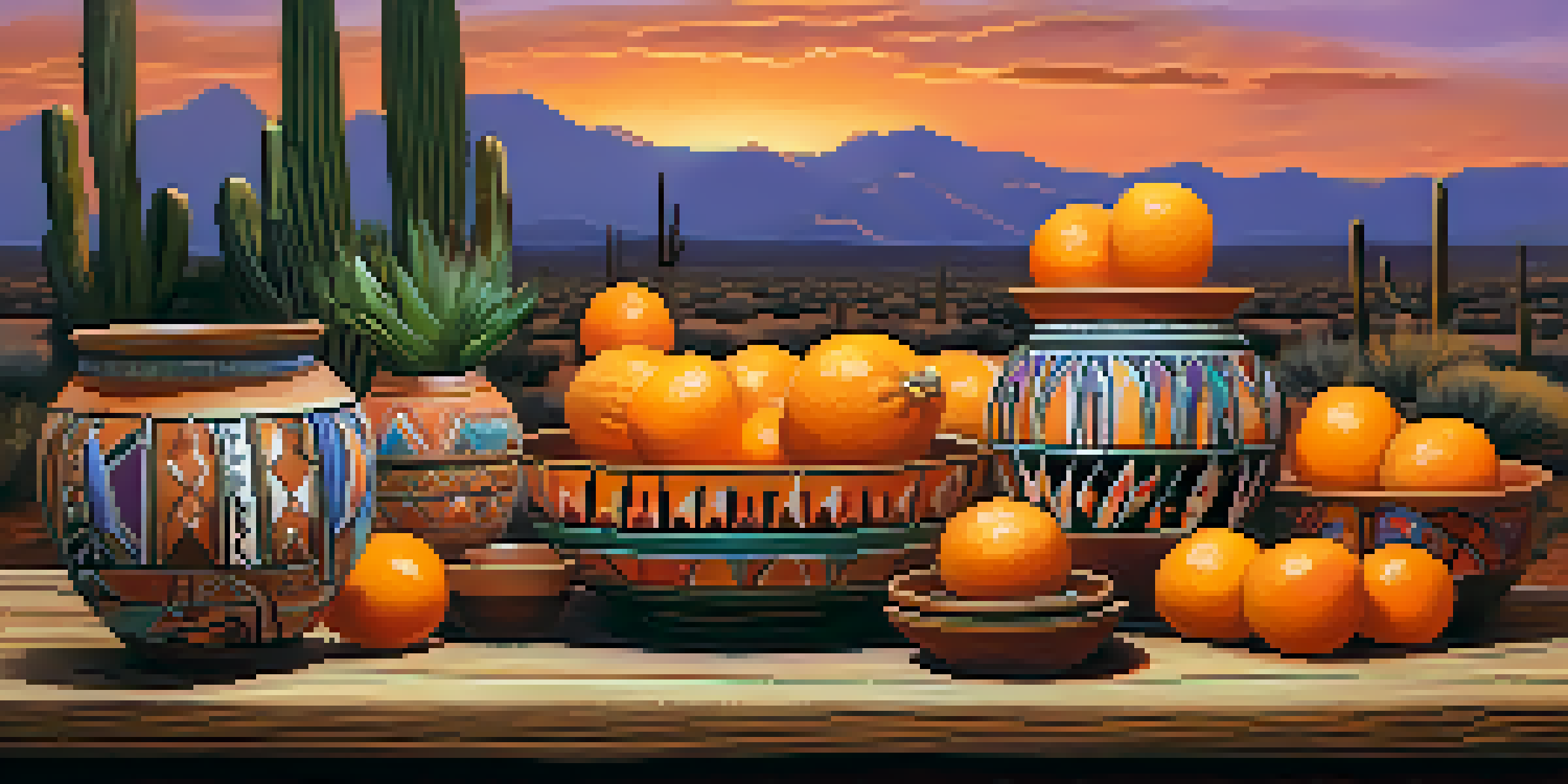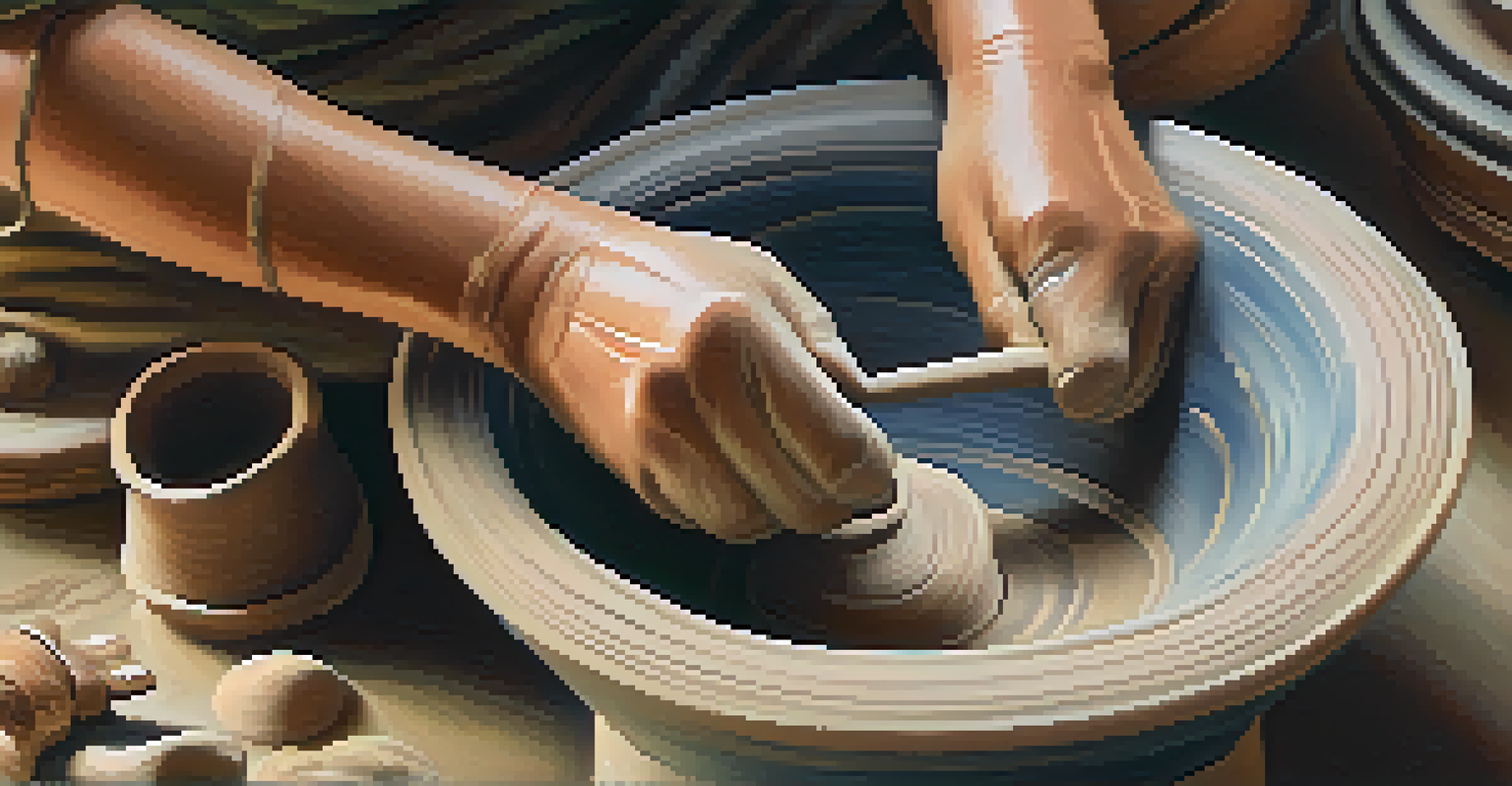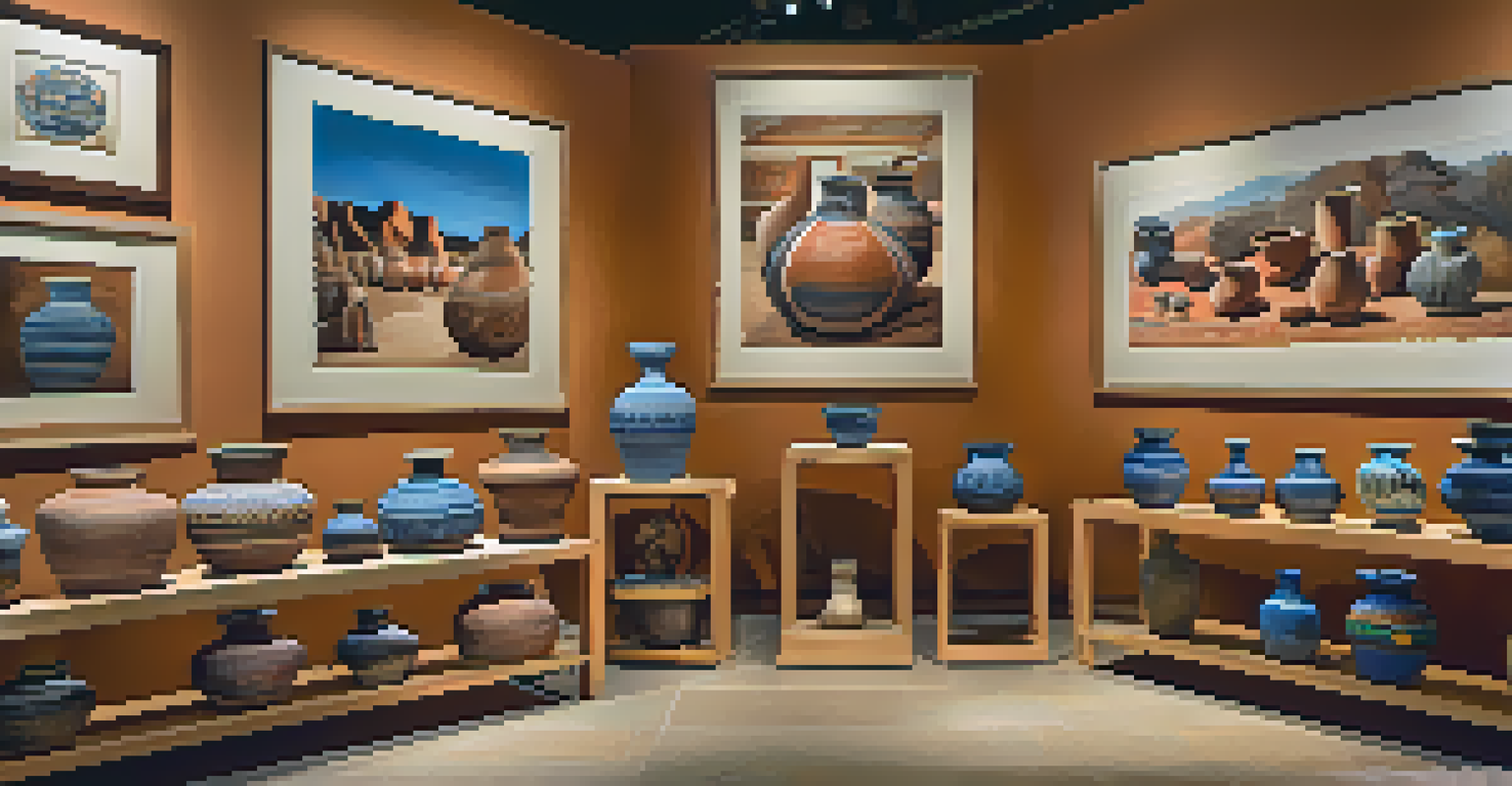Influence of Native American Culture on Tucson Pottery

Historical Roots of Tucson Pottery
Tucson's pottery has deep historical roots, tracing back to the Native American tribes that inhabited the region. The Hohokam, in particular, are known for their advanced pottery techniques, which laid the groundwork for future artisans. Their ability to create functional and aesthetically pleasing pottery is a testament to their understanding of local resources and artistic expression.
The creation of pottery is not just about making a vessel; it's about telling a story and preserving a culture.
Over centuries, different tribes, including the Tohono O'odham and Apache, have contributed their unique styles and methods. This diversity in techniques has enriched Tucson's pottery landscape, with each tribe bringing its cultural significance and artistic flair. The blending of these influences creates a tapestry of artistic expression that still resonates today.
As we explore the evolution of pottery in Tucson, it's essential to recognize how these historical influences continue to inform contemporary practices. Modern artisans often draw inspiration from ancient designs, marrying tradition with innovation. This ongoing dialogue between past and present keeps the art form vibrant and relevant.
Materials and Techniques from Native Traditions
The materials used in Tucson pottery are closely tied to Native American traditions, with local clay and natural pigments playing a starring role. For instance, the Hohokam utilized clay from riverbeds, which provided a sturdy yet malleable medium for crafting various pottery forms. This connection to the land underscores the importance of place in their artistic processes.

Techniques such as coiling and slab building are rooted in Native American practices, allowing artisans to create intricate designs and shapes. Coiling, a method where clay is rolled into long strands and layered to form vessels, showcases the skill and patience of the potter. Each piece tells a story, often reflecting the potter's cultural heritage and personal experiences.
Tucson Pottery's Rich Heritage
Tucson pottery is deeply rooted in Native American traditions, with various tribes contributing unique styles and techniques over centuries.
Moreover, the use of natural pigments, derived from minerals and plants, adds a layer of authenticity to the pottery. These colors are not merely decorative; they often hold symbolic meanings tied to cultural beliefs and practices. This thoughtful approach to materials and techniques highlights the deep connection between Native American culture and Tucson pottery.
Symbolism and Storytelling in Tucson Pottery
Many Tucson pottery pieces feature intricate designs that carry significant cultural meanings. Symbols often represent elements of nature, spirituality, and community, serving as a visual language that tells stories about the artist's heritage. For example, motifs like rain, corn, and animals often appear in the artwork, linking the potter to their environment and ancestral traditions.
Art is the most beautiful of all lies; it is the bridge between the past and the future.
The act of storytelling through pottery is a powerful way to preserve cultural narratives. Each design can encapsulate tales of creation, history, or moral lessons passed down through generations. This storytelling aspect transforms pottery from mere objects into vessels of knowledge and cultural identity.
As contemporary artists continue to explore these themes, they are breathing new life into traditional symbols. By reinterpreting age-old designs through a modern lens, potters are ensuring that these stories remain relevant and resonate with a broader audience. This blend of tradition and innovation enriches the cultural tapestry of Tucson pottery.
Modern Influences and Adaptations
In the current artistic landscape, Tucson pottery is experiencing a renaissance, influenced by both traditional and modern techniques. Contemporary artisans are experimenting with new forms, glazes, and technologies while honoring the rich heritage of Native American pottery. This fusion of old and new creates dynamic pieces that appeal to a diverse audience.
Many modern potters are also incorporating contemporary themes and social issues into their work. This evolution reflects the changing landscape of art and culture, where pottery becomes a medium for commentary and expression. By addressing current events or personal narratives through their art, potters are making important statements that resonate with today's society.
Cultural Preservation Through Art
Pottery serves as a vital tool for preserving Native American culture, with artisans sharing their skills and stories to educate future generations.
Despite these modern adaptations, the essence of Native American cultural influence remains strong. Artists often pay homage to their ancestors by incorporating traditional elements into their work. This connection to heritage ensures that Tucson pottery continues to serve as a bridge between past, present, and future.
Cultural Preservation Through Pottery
Pottery plays a vital role in the preservation of Native American culture, acting as a tangible link to history and traditions. Many potters actively engage in cultural education, sharing their knowledge and skills with younger generations. This transmission of techniques and stories ensures that the rich heritage of Tucson's Native American tribes remains alive.
Workshops and community events often showcase traditional pottery techniques, fostering an appreciation for this art form. These gatherings not only celebrate the craft but also create opportunities for cultural exchange and dialogue. Participants learn the significance of various designs and the stories behind them, deepening their understanding of the culture.
As a result, pottery becomes more than just an art form; it transforms into a tool for cultural resilience. By creating and sharing their work, artists are reaffirming their identity and strengthening community bonds. This emphasis on cultural preservation through pottery is crucial for maintaining a vibrant artistic legacy.
The Role of Local Markets and Exhibitions
Local markets and exhibitions play a significant role in promoting Tucson pottery and its Native American influences. These events provide a platform for artisans to showcase their work, connect with the community, and share their stories. By participating in markets, potters not only sell their art but also educate the public about their cultural heritage.
Moreover, exhibitions often highlight the rich diversity of styles and techniques found in Tucson pottery. Visitors are treated to a visual feast that reflects the vibrant artistic community, encouraging appreciation and respect for the craft. This exposure fosters a deeper understanding of the cultural significance behind each piece.
Modern Innovations in Pottery
Contemporary potters are blending traditional methods with modern themes, ensuring the art form remains vibrant and relevant in today's society.
As these markets and exhibitions grow in popularity, they also attract tourists, contributing to the local economy. This influx of interest allows for greater visibility of Native American culture and artistry, ensuring that the influence of these traditions continues to thrive in Tucson's pottery scene.
Future Directions for Tucson Pottery
Looking ahead, the future of Tucson pottery appears bright, with a continued emphasis on blending tradition with innovation. This dynamic approach invites new voices and perspectives into the conversation, enriching the art form even further. Young artists are eager to explore their cultural roots while integrating contemporary themes, ensuring the evolution of this craft.
Additionally, the rise of digital platforms and social media has opened new avenues for showcasing pottery. Artists can now reach global audiences, sharing their work and stories beyond local markets. This increased visibility provides exciting opportunities for cultural exchange and collaboration.

As Tucson's pottery scene continues to evolve, it remains deeply rooted in its Native American heritage. The ongoing commitment to preserving and honoring these traditions ensures that the art form will not only survive but thrive, inspiring future generations of artisans and art enthusiasts alike.